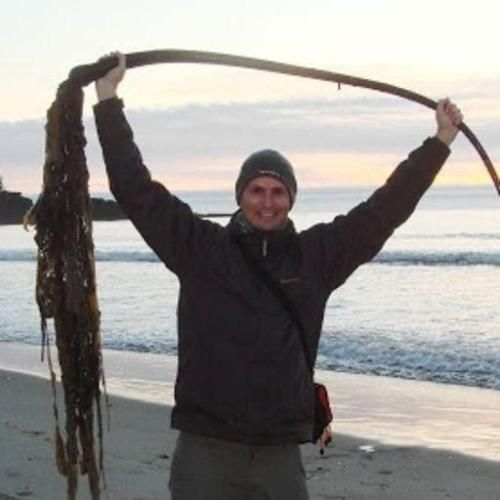
Carlos Alberto
San Gil Hernández
Profesor Ayudante Doctor
Publicaciones (81) Publicaciones de Carlos Alberto San Gil Hernández
2024
-
Assessing the molecular diversity of Sargassum (Phaeophyceae) in the NE Atlantic Ocean
European Phycological Congress (8º. 2023. Brest, France)
-
Coralline algae (Rhodophyta, Corallinales) early colonizers of the littoral lava flows of the recent volcanic eruption of La Palma (Canary Islands)
European Phycological Congress (8º. 2023. Brest, France)
-
Multigene phylogenetics of Sargassum (Phaeophyceae) revealed low molecular diversity in contrast to high morphological variability in the NE Atlantic Ocean
Journal of Phycology
-
Primary ecological succession of marine communities on the Tajogaite lava flows (La Palma, Canary Islands), fishes colonize faster than macroinvertebrates and algae
Frontiers in Marine Science, Vol. 11
2023
-
Cambios en los bosques marinos de Canarias: miniaturización de las comunidades de Gongolaria abies-marina
I Congreso Iberoamericano jóvenes investigadores del mar. IV Congreso Internacional Jóvenes Investigadores del Mar. Libro de resúmenes. Impulsando el conocimiento azul (1º. 2023. Almería)
-
Desiccation and thermo-tolerance of Fucus guiryi (Phaeophyceae) from its southernmost populations (Canary Islands, Eastern Atlantic)
Botanica Marina, Vol. 66, Núm. 2, pp. 99-112
-
Discrepancia entre morfología y genética: el caso de Sargassum subgen. Sargassum en el atlántico norte
I Congreso Iberoamericano jóvenes investigadores del mar. IV Congreso Internacional Jóvenes Investigadores del Mar. Libro de resúmenes. Impulsando el conocimiento azul (1º. 2023. Almería)
-
El destino de la biodiversidad durante la reciente erupción volcánica de Tajogaite, La Palma: Investigando un evento natural catastrófico
Tajogaite. Enseñanzas de una erupción volcánica (La Palma, otoño 2021): Actas de la XVIII Semana Científica Telesforo Bravo (Instituto de Estudios Hispánicos de Canarias), pp. 117-151
-
High taxonomic diversity and miniaturization in benthic communities under persistent natural CO2disturbances
Proceedings of the Royal Society B: Biological Sciences, Vol. 290, Núm. 1995
-
Primeros colonizadores en los deltas lávicos del volcán Tajogaite (La Palma, islas Canarias)
Tajogaite. Enseñanzas de una erupción volcánica (La Palma, otoño 2021): Actas de la XVIII Semana Científica Telesforo Bravo (Instituto de Estudios Hispánicos de Canarias), pp. 63-116
-
Primeros colonizadores en los deltas lávicos del volcán Tajogaite (La Palma, islas Canarias).
XVIII Semana Científica Telesforo Bravo. Tajogaite. Enseñanzas de una erupción volcánica (La Palma, otoño, 2021)
-
Tracing genetic variation of Gelidium canariense (Rhodophyta) based on new and historical collections
Phycologia
2022
-
Environmental and human factors drive the subtropical marine forests of Gongolaria abies-marina to extinction
Marine Environmental Research, Vol. 181
-
Herbarium macroalgae specimens reveal a rapid reduction of thallus size and reproductive effort related with climate change
Marine Environmental Research, Vol. 174
-
Recurrent large-scale sea urchin mass mortality and the establishment of a long-lasting alternative macroalgae-dominated community state
Limnology and Oceanography, Vol. 67, Núm. S1, pp. S430-S443
2021
-
Chemical characterization of the Punta de Fuencaliente CO2-enriched system (La Palma, NE Atlantic Ocean): A new natural laboratory for ocean acidification studies
Biogeosciences, Vol. 18, Núm. 5, pp. 1673-1687
-
Effect of substrate size and depth on macroalgal communities in unstable marine rocky bottoms
Aquatic Botany, Vol. 173
-
Fast climatic changes place an endemic Canary Island macroalga at extinction risk
Regional Environmental Change, Vol. 21, Núm. 4
-
Fertile drifting individuals of the invasive alien Sargassum muticum (Fucales, Phaeophyceae) reach the coasts of the Canary Islands (eastern Atlantic Ocean)
Aquatic Botany, Vol. 168
-
The genus Sargassum in the Canary Islands: preliminary assessment of its diversity
12th International Phycological Congress: IPC2021 (12º. 2021.Chile)